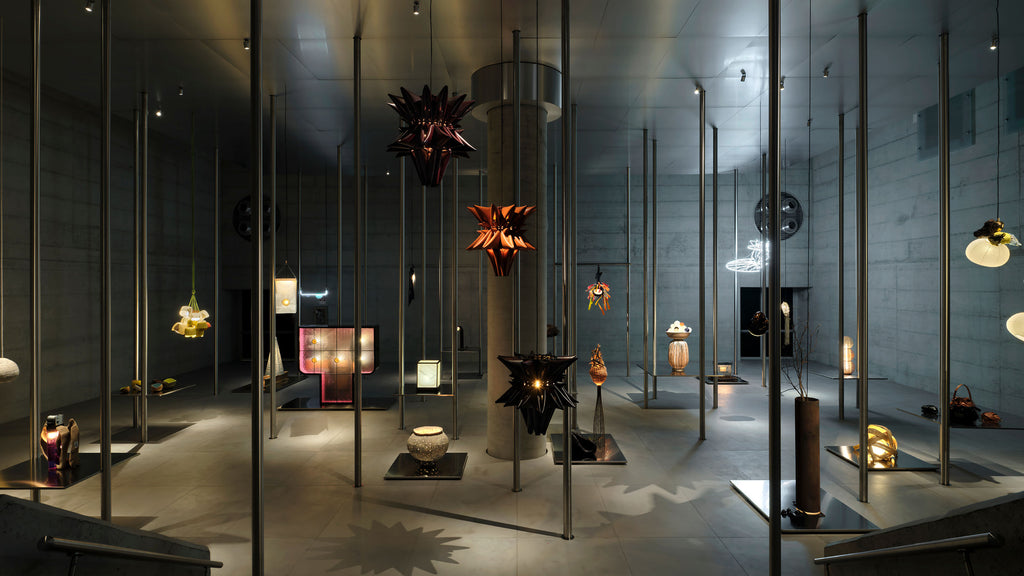
The Loewe 24 Artists exhibition of lamps at Palazzo Citerrio for Salone del Mobile 2024 Image courtesy of Loewe via PR Times
As an editor and designer, NiMi Projects co-founder Mio Yamada researches and compiles a preview of Japanese design at Salone del Mobile for The Japan Times every year. And as the world’s largest design and furniture fairs, Milan Design Week is one of those events that we also always love to research. It’s a great opportunity to introduce our readers to the inventive works of Japan and keep an eye on new design concepts, products and materials.
Here are some of our favorite lighting and innovative material picks from this year’s The Japan Times On: Design column, plus a few others we stumbled across later.
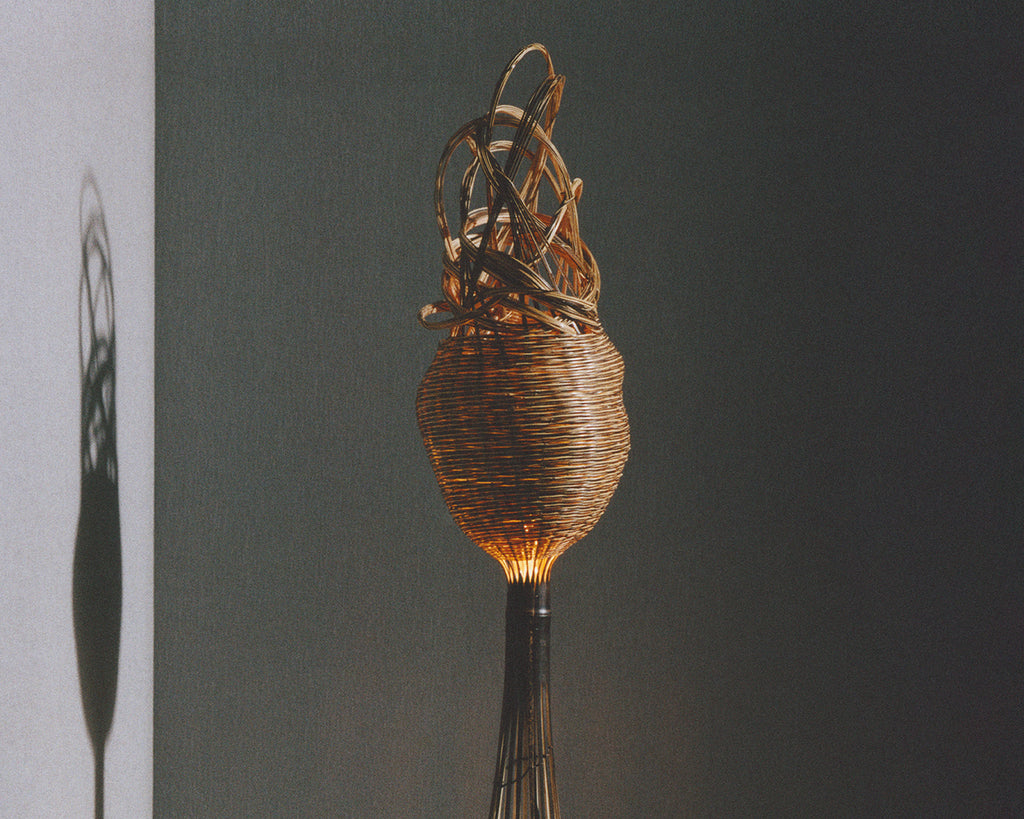
A bamboo lamp, designed by Chikuunsai Tanabe IV, one of the artists and collaborators of the Loewe 24 Artists exhibition at Salone del Mobile 2024. Image courtesy of Loewe via PR Times
Lighting up the week
At Palazzo Citerrio, LOEWE unveiled an extensive collection of beautiful bespoke lamps, curated by Jonathan Anderson and showcasing unusual materials. Twenty four international artists and LOEWE collaborators were involved, including several Japanese creators — ceramicists Akiko Hirai and Takuro Kuwata; urushi lacquer artist Genta Ishizuka; bamboo artisans Hafu Matsumoto and Chikuunsai Tanabe IV; pottery artisan Kazunori Hamana; and glass artist Shohei Yokoyama.
The entire collection is stunning, with works utilizing light in unique ways — reflecting off surfaces, seeping through openings and diffused by materials in designs of highly artistic forms. Accompanying the exhibition were various LOEWE items, also made in collaboration with the artisans, including leather bags reinterpreted by bamboo by Hafu Matsumoto and Tanabe Chikuunsai IV.
Take a look at LOEWE’s YouTube video here to learn more about the 24 lighting designs.
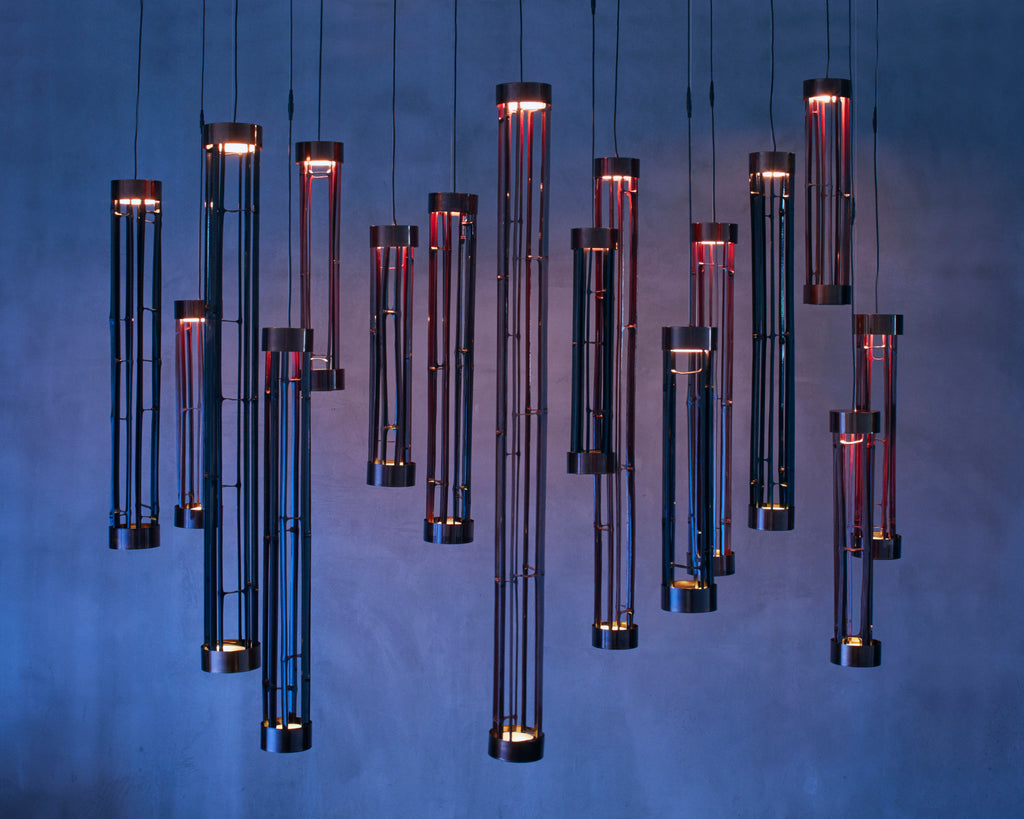
Yu Watanabe's "Radiance of Nature with Urushi" lighting, featuring traditional Japanese urushi lacquer. Image courtesy of Yu Watanabe, ©Shinji Yagi, Yoshihiro Ozaki
Lustre and light
The “Disclosure: Design Studios Unveiled” exhibition, part of Isola Design Fair, included the work of Yu Watanabe, an art director and self-named “material explorer.” Watanabe’s “Radiance of Nature with Urushi” lighting is the result of experimentation with traditional urushi lacquer and bioplastics to create sustainable, contemporary pendant lampshades. Hung at different heights together, their tall columnal cage structures appear like a forest, each reflecting light from their gleaming surfaces.
Visit Yu Watanabe's website to see his other material explorations and works.
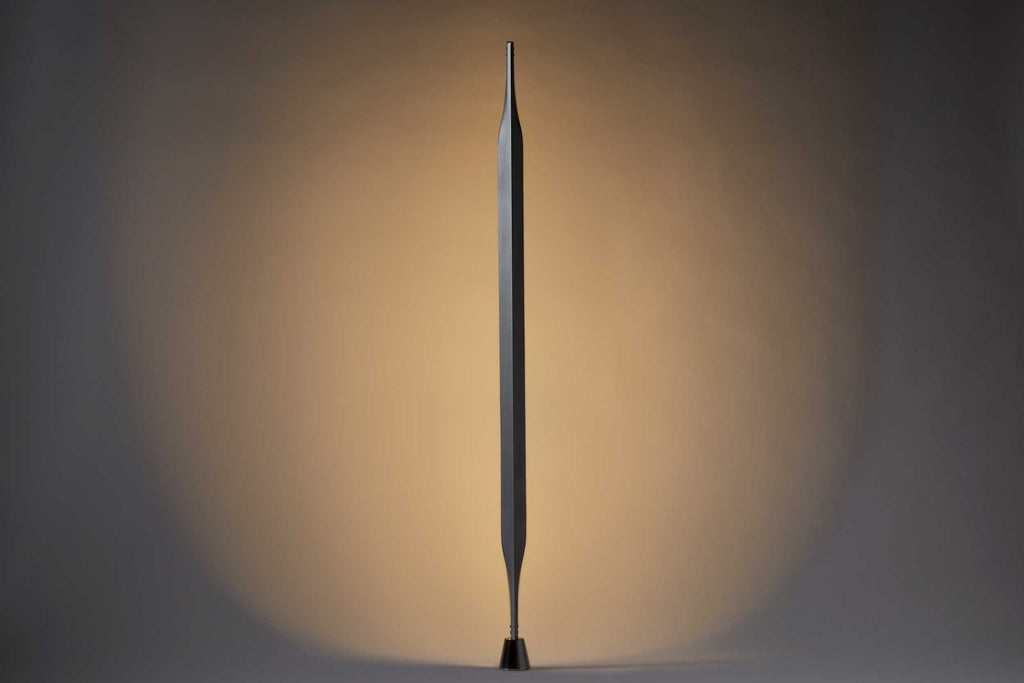
The Arrow Lamp, designed by Kodai Iwamoto emits light from behind to reflect off wall surfaces. Image courtesy of Kodai Iwamoto, ©Tomohiko Ogihara
Bright materials
At SaloneSatellite, Salone del Mobile’s platform for young designers, Kodai Iwamoto also introduced new lighting works, including a distinctive elongated indirect lighting Arrow Lamp. Kodai’s dedication to craft and commitment to understanding a material’s potential are incredible. For his pieces, he self-trains in all the manufacturing techniques and constructs each work by hand himself. This includes all woodworking and metalworking. A multi-talented designer, his furniture and lighting creations are minimalist and clean-lined, though often with a subtle sense of intelligent humour.
Visit Kodai Iwamoto's website to see more of his work.
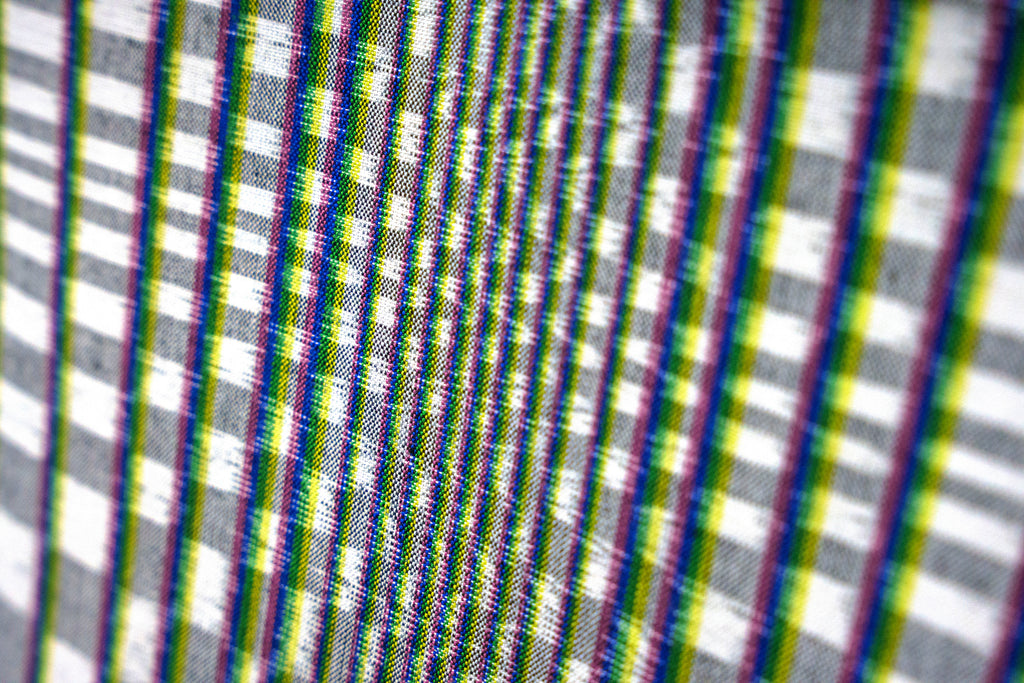
Hana Mitsui's "Blurring Checker" fabric uses purposely misaligned threads in traditional Japanese kasuri weaving to create an unusual hazy checked textile. Image courtesy of Hana Mitsui
New looks for tradition
Hana Mitsui, a textile innovator who also showed her works at SaloneSatellite is our fabric favourite.
Hana works with traditional Japanese textile manufacturers to create new fabric designs, often re-using waste material, such as unused threads, from their factories. Her works utilize traditional techniques, cleverly manipulating serendipitous quirks of weaving to create vibrant yet elegant contemporary patterns. Her "Blurring Checker" sees beauty in the misalignment of dyed threads in traditional kasuri weaving, something that is usually considered a mistake. By purposely allowing the misalignment to occur, she created a woven pattern that appears softly blurred. Other pieces by Hana reveal how technique can produce visual illusion and add a three-dimensional element to textiles.
To see Hana Mitsui’s beautiful work, visit her website.
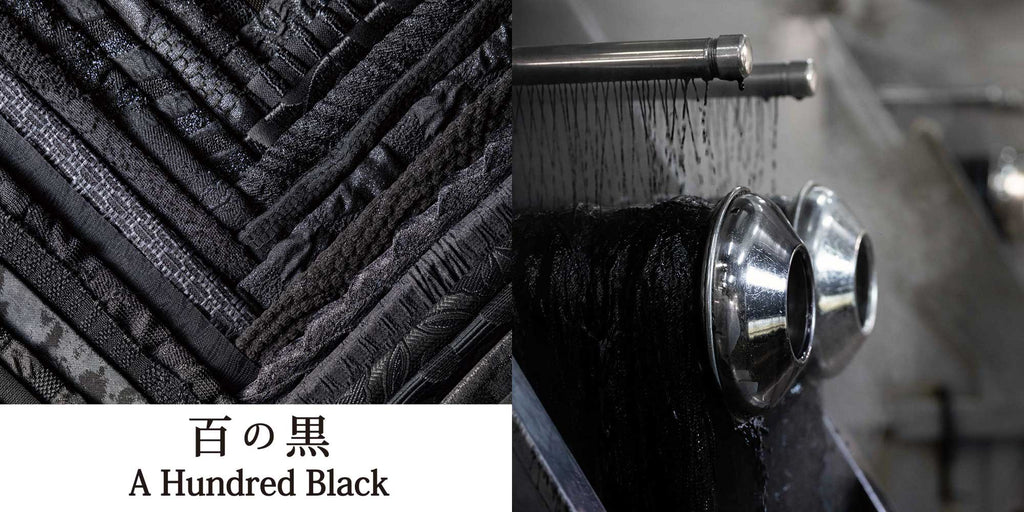
Kawashima Selkon's A Hundred Black exhibition during Milan Design Week 2024 showcased the Japanese textile manufacturer's numerous pattern and texture techniques. Image courtesy of Kawashima Selkon via PR Times
All in black
The nishijin brocade textile company Kawashima Selkon wowed visitors in 2023, with a colourful showcase of light-reflecting fabrics that included glittering gold threads and an array of textures. This year it did a 180 and went all-black — but with equally stunning results.
The “A Hundred Black” exhibition at Superstudio Pui, art-directed by lighting designer Izumi Okayasu, presented 100 different black fabrics, all made using traditional Japanese weaving techniques combined with new textile production technology. Warp and weft thicknesses, thread composition and tension, and diverse textural patterns reveal how the inky tone is far more versatile than you would think. It can be expressed in the humblest forms or create luxurious fabrics that shimmer in the light.
To see Kawashima Selkon’s process and the samples of the black textiles, take a peek at their photogallery.

Majotae revives a centuries-old Japanese hemp fabric in the form of bed linens, creatively directed by Teruhiro Yanagihara. Image courtesy of Majotae via PR Times
Simply stunning
At Secci Milano Gallery, Majotae launched its revival of a centuries-old Japanese hemp textile that was once commonly used for daily wear and ceremonial garments. Years of research went into recreating the superfine and surprisingly soft hemp-fibre fabric, which was traditionally hand spun and woven. Using modern machinery fine-tuned to the same specs as the handwoven original, Majotae’s first collection, Majotae 9490, is aptly simple — a series of bedding, naturally dyed in earthy tones. Creatively directed by a master of minimalism Teruhiro Yanagihara Studio, it focuses on the textile itself — its texture and functionality as a breathable fabric that softens with use.
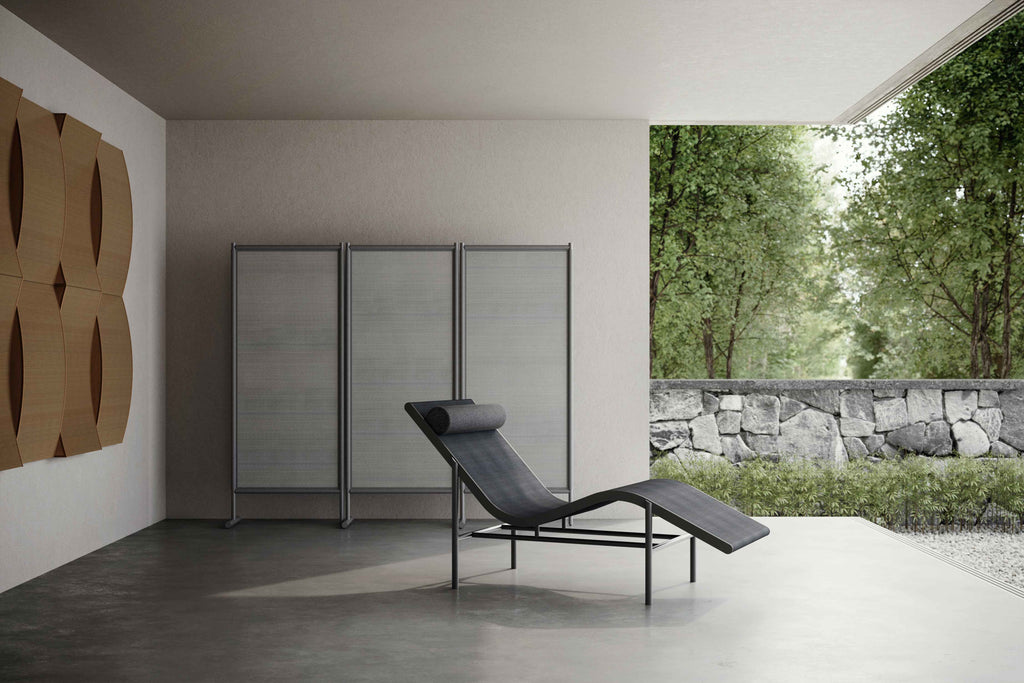
Furniture maker Adal's Look into Nature collection of works, each featuring sections of woven igusa (Japanese rush grass). Image courtesy of Adal via PR Times
Furniture we love
Last, but absolutely not least, Salone del Mobile’s main exhibition at Rho Fiera, included numerous internationally known names of Japanese furniture design. These included Karimoku Furniture, which exhibited four of its designer-led brands at different venues of Milan Design Week, and Nagano Interior, which showcased beautifully hand-finished solid wood yet very practical works.
Of particular interest, however, has to be Adal’s Look into Nature collection, which uses a material rarely seen in furniture — igusa (Japanese rush grass). Igusa is still used to weave tatami mats in Japan, but a decline in demand has led its production to become a struggling industry. Adal reimagines the natural and sustainable material as one elegantly suitable for modern furniture. The collection of lounge chairs, seating, coffee tables, room screens and wall art, feature igusa woven in the traditional way, but in smooth contemporary forms.
To read more about other Japanese design at Milan Design Week, including Karimoku’s other brands, Daft about Draft’s new furniture, and Isola Design Fair’s young innovators, visit The Japan Times article here.
